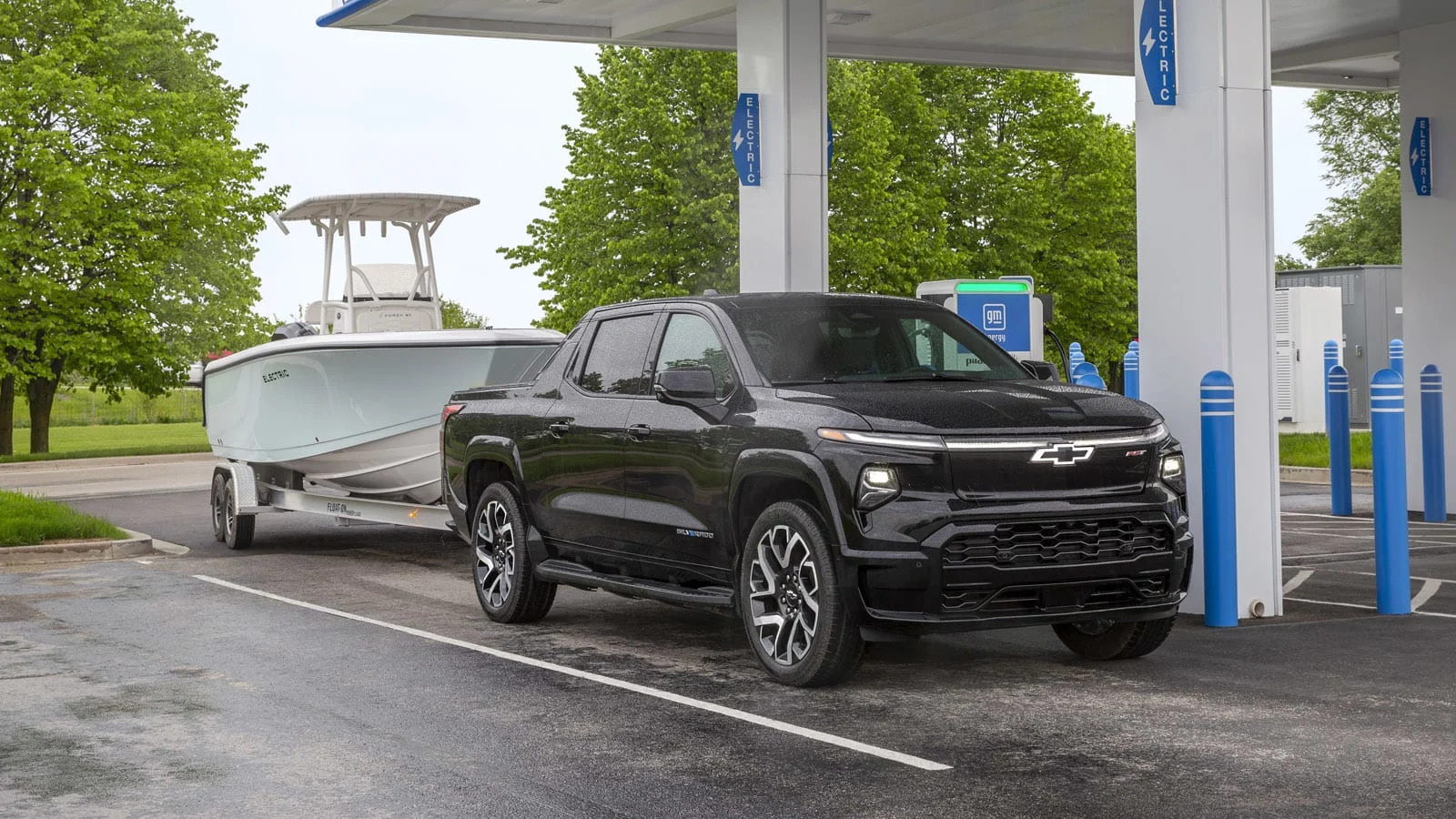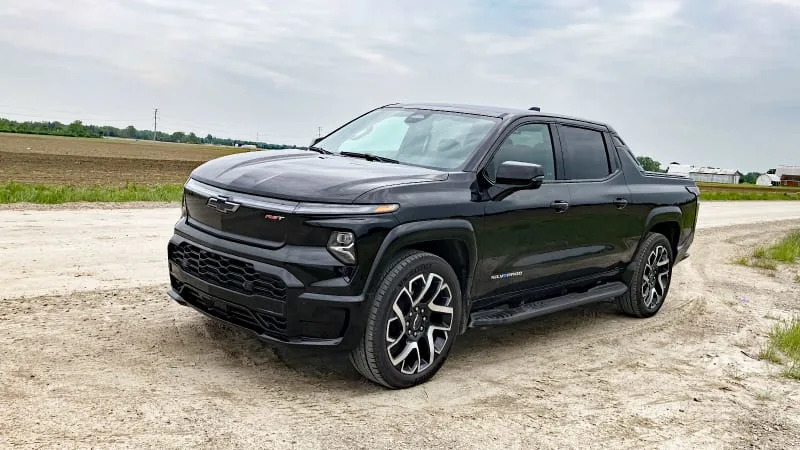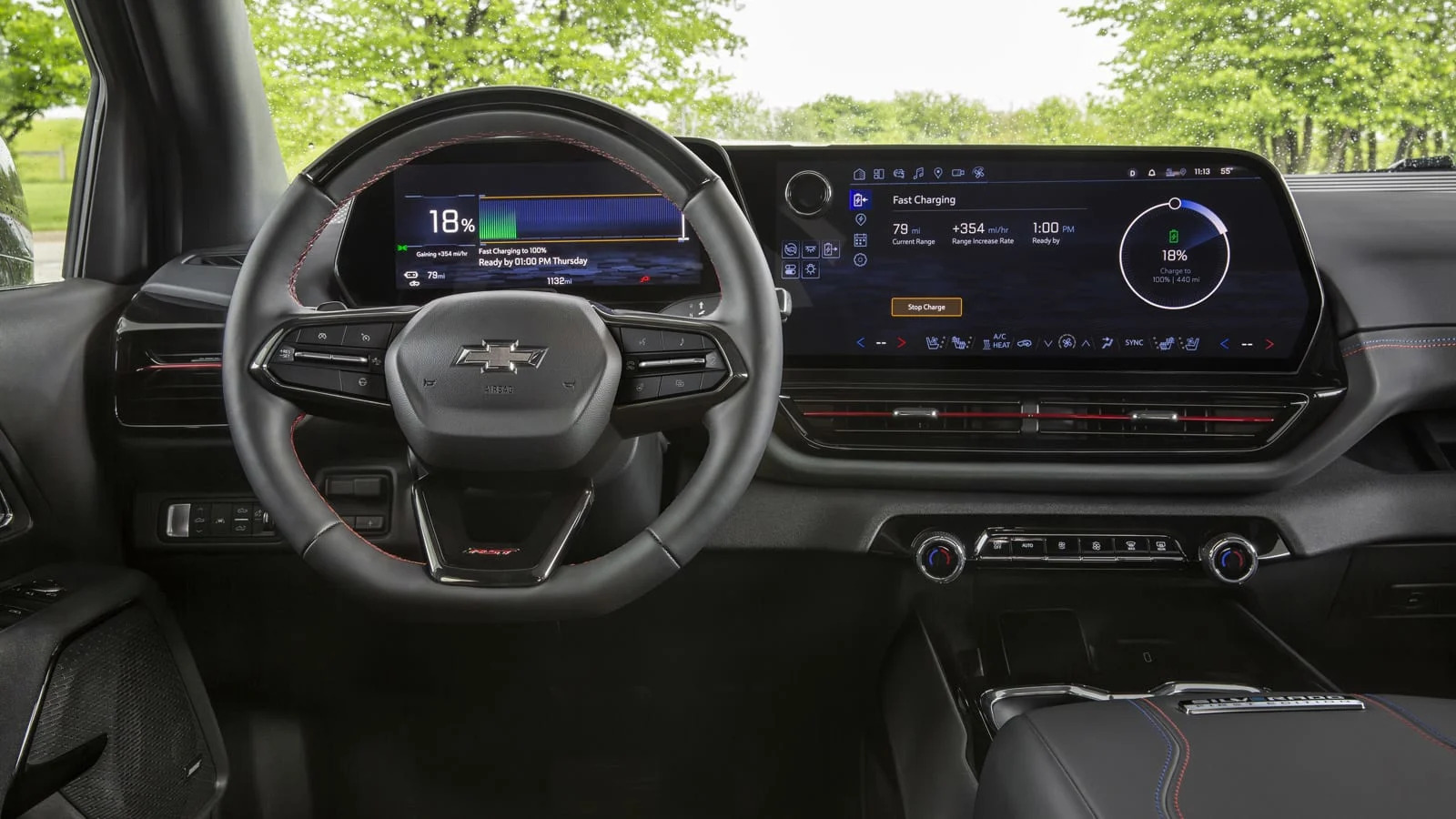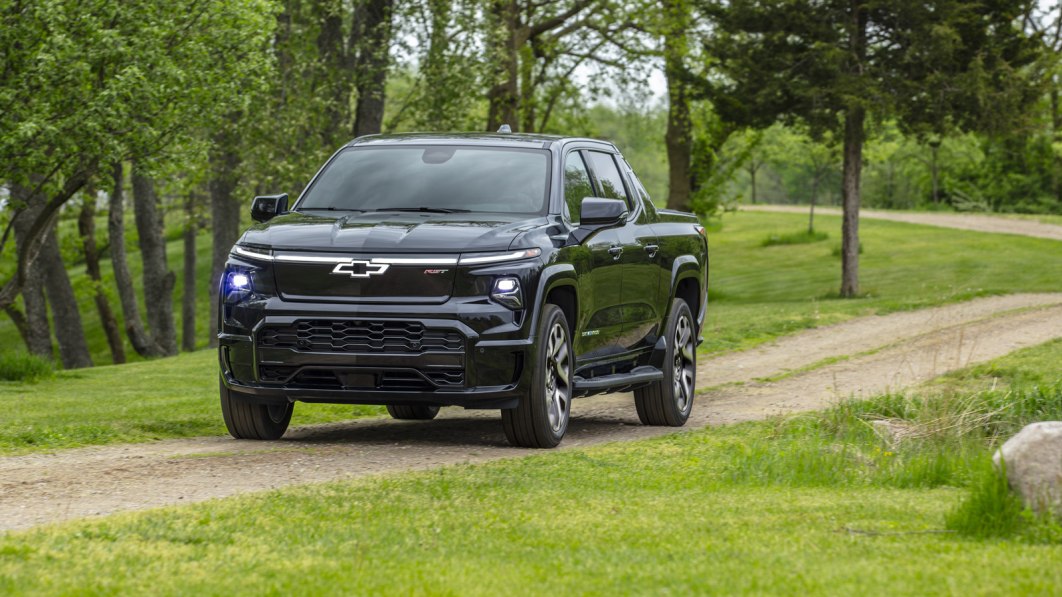DETROIT — General Motors takes big swings with electric vehicles. From the late ‘90s EV1 to the plug-in hybrid Chevrolet Volt a decade later, GM’s electrification efforts set new standards or fail infamously. Sometimes, they do both. Now comes the 2024 Chevy Silverado EV RST, a powerful, well-equipped technological tour de force that vaults Chevy to the top of the electric truck space.
The 4WT, Chevy’s name for the lower priced, lower-spec work truck we reviewed 11 months ago, whet our appetites with impressive range and power when it launched for fleets last year, but the RST is something more for truck buyers who expect premium features.
The RST (440 miles) has nearly identical range as the WT (450 miles), but the comparisons end there. The WT is a credible truck for fleet users, and consumers will be able to buy it this summer (it’s a solid value play). But the RST is where Chevy demonstrates how it can advance the notion of an electric truck to the tune of 754 horsepower and 785 pound-feet of torque.
Ford beat Chevy to the segment with the F-150 Lightning, but Chevy’s reply offers more range and power — the best range in the segment — to create something that’s closer to the GMC Hummer EV Pickup in spec and ambition.
 Silverado EV RST and WT
Silverado EV RST and WT
Speaking of the numbers, everything about the Silverado EV RST is huge, beyond just the range and power. It rolls on 24-inch wheels filled to 61 PSI front and 68 rear. It weighs 9,119 pounds at the curb, which makes the sprint to 60 mph in 4.5 seconds all the more impressive. That said, it is a fairly pedestrian figure for performance EVs, as the Rivian R1T, Tesla Cybertruck and Lightning are quicker.
The biggest mental recalibration the Silverado EV RST First Edition requires is the price: $96,495, a staggering figure for anything wearing the bowtie badge, and a price that eclipses most Corvette and Suburban models. The future costs money. The Silverado EV is also not eligible for federal tax incentives, though Chevy expects that to change this year. The RST First Edition is currently the top trim SIlverado EV, slotting above the 4WT’s price tag of $77,905. Later this year, the LT and 3WT models will join the fold, followed by a Trail Boss in 2025.
It’s an electric truck, so charging and towing are naturally paramount. The Silverado is capable of adding 100 miles of range on DC fast charging at a blistering max charge rate of 350 kilowatts in 10 minutes. Home charging is more complicated. Chevy says the Silverado EV RST can get 34 miles per hour on Level 2 charging for a 13-hour recharge, but that’s using GM’s PowerShift Charger that can pump out an eye-popping 19.2-kW – most home chargers are good for 11 kW and you wouldn’t get anywhere near that if you just plugged the truck into a 240-volt outlet. In other words, 13 hours is a best-case scenario. This would be the downside to making a battery so big that it can power a 9,119-pound truck for 440 miles.
Of course, it’s also capable of acting as a generator to power other things up to 10.2 kW with the necessary equipment, meaning like the Lightning, the Silverado EV can ride to the rescue to power other EVs or even your house.
Maximum towing capacity for the RST stands at 10,000 pounds, which is exactly the same as the Lightning. The Cybertruck and Rivian R1T claim 11,000 pounds.

Our first experience behind the wheel would not be something so practical as towing, however. No, it would be to test perhaps the truck’s most superfluous feature: Wide Open Watts. It’s basically launch control and allows the driver to unlock the full horsepower and torque rating (GM does not indicate how much output the motors generate under normal conditions). It takes about 10 seconds to cue up via the touchscreen. Then just mash the accelerator and hold on. It’s a nice party trick.
Our drive route then took us through rural Michigan – truck country for sure – as spring came into bloom. The four-wheel steering makes the Silverado light on its feet and relatively easy to turn and park. Dynamically, the column-mounted electric power steering is light on center, but it weights up when traveling at higher speeds. Super Cruise is on board, is easily engaged and operated as we’ve come to expect, though the big truck did want to over-correct its lane position at times on the expressway. Overall, the Silverado EV is a well-sorted, comfortable truck, thanks in part to the adaptive air suspension that’s a bit more agreeable than the Lightning and R1T.
The Silverado offers solid visibility. The brakes are fine, not too intrusive for an EV, and can be tuned for one-pedal driving. We had occasion to stomp on them several times – the WOW tests had a pretty short runoff – so the brakes were needed. Later in the day, a backup suddenly appeared around a bend on I-94, and we took the Silverado from around 70 mph to, well, slow, almost immediately.


At a stoplight, a cement mixer approached us on the left. The driver leaned out and yelled: “Is that electric?”
“Yes!”
He had more questions, but the light turned and he had to move on, merging into the midday traffic. For Chevy designers, this anecdote is a mission accomplished moment. Cement mixer dude knew it was a Silverado and had an inkling that it was electric. Design is subjective, but the RST takes the Silverado’s basic identity as an electric truck first showcased in the WT and then glows it up to something that looks special at the curb. The front end is curved and styled aerodynamically to create a low coefficient of drag and wring out as much range as possible, making judicious use of air dams and splitters. The hood is tucked over and integrates into the grille, sealing the “eTrunk,” while slim LED lights give the truck an upscale feel. Heading back, the flying buttresses on the sides recall the Chevy Avalanche, while the curved wheel wells further separate the EV from the gas-powered Silverado.

“The Silverado EV has a different persona from the ICE Silverado,” said Chip Thole, exterior design manager.
That was a risk. By recasting the electric Silverado as a curvy alter-ego to the traditional truck, Chevy could alienate existing customers. It could also attract new ones, and we think that’s what will happen. The Silverado RST feels like something different and aspirational on the outside, which allows it to be parked next to the Rivian R1T and hold its own from a design standpoint. By contrast, it’s tough to differentiate the Lightning from a gas-powered F-150. True, that will be the right formula for some truck buyers, and although we think Chevy wins the design game, we’ll ultimately see who wins after a year or two on the sales charts.
The one area Chevy played it safe and perhaps underachieved is the cabin. The vast 17.7-inch touchscreen is easy to use and colorful, and is nicely complemented by the 11-inch digital instrument display. There’s also some red and blue stitching, plus red accents on the vents to dress things up, but this is a $96,000-plus vehicle, and the materials, especially the door panels, feel pedestrian. Functionality also underwhelms. The center console may be large, holding up to seven gallons of stuff, or enough room for a decent handbag or baseball mitt, but Ram and Ford shows there are more creative approaches to this high-traffic area. Watch my video for a review of the First Edition interior.




While the cabin is fine to good, Chevy displays considerable ingenuity with the bed features. The bed buttresses aren’t the only nod to the Avalanche, as the Silverado EV revives its clever MidGate (officially now Multi-Flex Midgate) that has two main tricks. There is a 60/40-split pass-through, not unlike that of a sedan, that lets you carry longer items such as the kayak shown above. This would be your best bet when also using the available bed tonneau cover (the cabin would remain sealed), which as a design element, also makes the RST look sleeker and more modern. The second Midgate trick is for the window to be removed and relocated within the pass-through panel, and for them together to lower atop the back seatbacks. Doing so expands the RST’s standard 5-foot-11-inch bed to 9 feet. It’s clever. More trucks should do this, though it is predicated on having a combined bed and body as the Silverado EV has.
The Silverado EV RST arrives at a seminal time for electric vehicles, when controversy over their merits and costs is at a fevered pitch set against an upcoming national election. American-made, expensive and loaded with power and comfort, perhaps this truck is a metaphor for all of the headwinds swirling around EVs at this moment. Perhaps. But it’s also an electric vehicle and a damn good truck. Ford will likely boost the Lightning’s power and range in the coming years, and the Ram 1500 REV sure is talking a big game. For now, the Silverado stands atop the electric truck segment.
Related Video:

